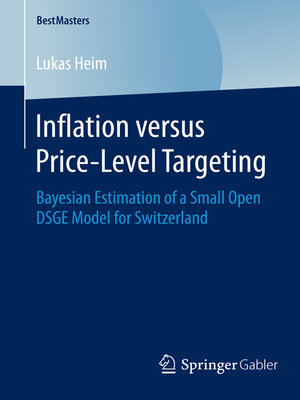Inflation versus Price-Level Targeting
ebook ∣ Bayesian Estimation of a Small Open DSGE Model for Switzerland · BestMasters
By Lukas Heim

Sign up to save your library
With an OverDrive account, you can save your favorite libraries for at-a-glance information about availability. Find out more about OverDrive accounts.
Find this title in Libby, the library reading app by OverDrive.



Search for a digital library with this title
Title found at these libraries:
| Loading... |
Lukas Heim evaluates the performance of a price-level targeting rule compared to that of a standard inflation targeting rule. The comparison is based on a medium-scale DSGE model which has been estimated based on state-of-the-art Bayesian methods. The model for the Swiss economy is an expanded version of the framework proposed by Galì and Monacelli (2005) as well as Monacelli (2005). It is enriched with habit formation in consumption, price indexation, labor market imperfections, and several additional structural disturbances. The results show that – exactly as expected – the volatility of inflation is quite significantly lower under the price-level targeting regime, whereas the volatility of the output gap is markedly higher conditional on either productivity or preference shocks. Therefore, the introduction of a price-level targeting regime would likely produce an increase in the volatility of real economic activity conditional on both supply-side and demand-side shocks. Since inflation and output are targeted simultaneously, none of the two policies is strictly dominant.






